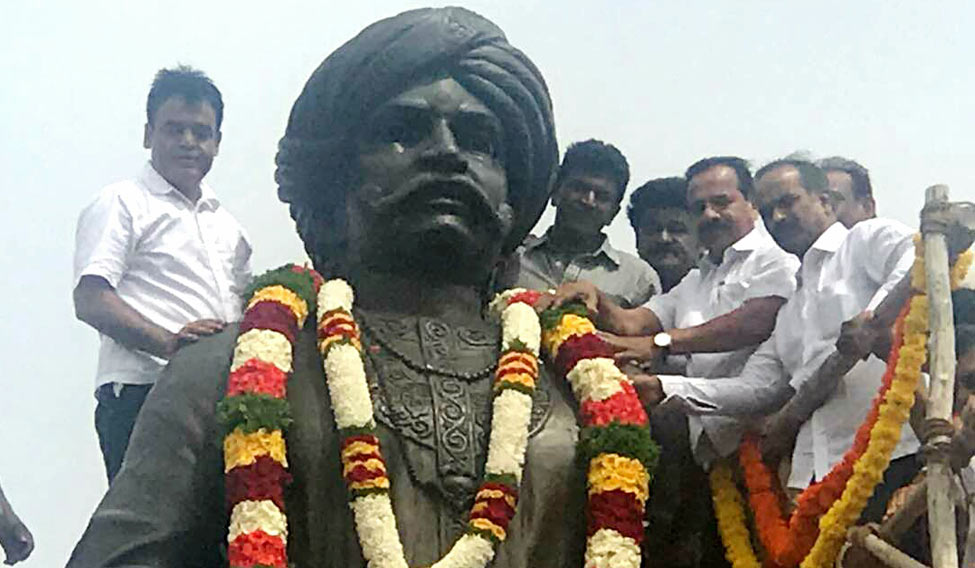A long forgotten hero, who transformed the small market town of Bengaluru into a capital city that is now globally known as the Silicon Valley of India, finally gets his due. On June 27, 2017, the Karnataka government held the first ever Kempegowda Jayanthi on the 507th birth anniversary of Kempe Gowda (1510-1569), a chieftain under the Vijayanagara empire and also considered the architect of Bengaluru.
On Tuesday, colourful processions from the four gadigopura (watchtowers) at Lalbagh, Ulsoor, Gavipuram and Mekhri circle that culminated at Freedom Park in Bengaluru marked the formal launch of the Kempegowda Jayanthi, which will now be celebrated across the state, every year.
Born as Hiriya Kempe Gowda, the son of Kempananje Gowda, who had ruled Yelhankanadu for more than 70 years, Kempe Gowda got the idea to build a futuristic city during a hunting expedition in Shivanasamudra (near Hesaraghatta). He imagined a city with a fort, a cantonment, network of tanks (water reservoirs), temples and markets where people of all trades could live together.
Last April, the state government had put off the celebrations due to the confusion over his date of birth. An expert panel comprising historians and scholars zeroed in on the exact date (June 27) after long deliberations on books and historical documents.
The revival of the iconic ruler, who belongs to the Vokkaliga community, a dominant and politically strong group in the state, is no mere coincidence as Karnataka goes to assembly polls in 2018. The yet-to-be tabled contentious caste survey (which was allegedly leaked to the media) puts the Vokkaliga population at 49 lakh (8.16 per cent), making it the fourth largest community after Scheduled Castes, Muslims and Lingayats. The survey has irked the community, which believes Siddaramaiah is trying to consolidate the Ahinda (minorities, backward classes and dalits) votebank while downplaying the numerical strength of the politically strong Vokkaliga community.
Ahead of the 2018 polls, political parties are trying hard to woo the community. It was palpable at the Kempegowda Jayanthi celebrations too. Chief Minister Siddaramaiah announced that a giant statue of the visionary ruler would be installed at the Kempegowda international airport of Bengaluru, and one of the varsities following the trifurcation of the Bangalore University, would be named after the icon, he declared.
Union Minister for Statistics and Programme Implementation D.V. Sadananda Gowda announced that if the BJP was voted to power, the first task would be to include a chapter on Kempe Gowda and his achievements in the school textbooks. He also claimed that the Centre's Smart City initiative and Amrut – Atal Mission for Rejuvenation and Urban Transportation – was inspired by Kempe Gowda.
With the ruling Congress' increasing appeasement of the ahinda groups, the Vokkaliga leaders in the Congress party fear that the community might shift their allegiance to JD(S) or the BJP. Energy minister and Vokkaliga leader D.K. Shivakumar's show of bonhomie by touching the feet of JD(S) patriarch and Vokkaliga strongman H.D. Deve Gowda during the celebration is being read as an attempt to show his affiliation to his community. Shivakumar being denied the Karnataka Pradesh Congress Committee chief's post (but appointed as the campaign committee chairman) is also likely to impact the Congress' poll prospects in the Old Mysore region – the Vokkaliga heartland.
Bengaluru was established by Kempe Gowda in 1537, as the capital of his erstwhile kingdom. He built Bangalore Fort and the town in 1537 AD and moved his capital from Yelahanka to Bengaluru Pete. Kempe Gowda built a red fort with eight gates (watchtowers) to demarcate the boundary of the city. Inside the fort, two wide roads crisscrossed each other. The other roads were made parallel or perpendicular to them. The streets were designated as commercial or residential, and markets were established for each social group depending on the trade and craft they practised. He patronised priests, craftsmen and artisans alike. Famous temples in the city – Vinayaka and Anjaneya at Yelahanka, Bull temple in Bsavanagudi, Gavi Gangadhareshwara temple were built by him. Tanks were built for the water supply to the town and for irrigation.
Ironically, the current state of the state capital, with its frothing lakes, drinking water crisis, garbage piles, rapid expansion of the city, haphazard development and crumbling and inadequate infrastructure is a major let-down for its legacy. The city with an expanse of 226 sq km was expanded to 741 sq km. The Greater Bangalore which took shape in 2007, continues to reel under huge disparities in terms of connectivity, transport, water supply and solid waste management.
The state government, which has named the airport, railway station and bus station after Kempe Gowda, could do well by taking a lesson or two on town planning from the visionary ruler, and also protect the heritage monuments of the bygone era.





